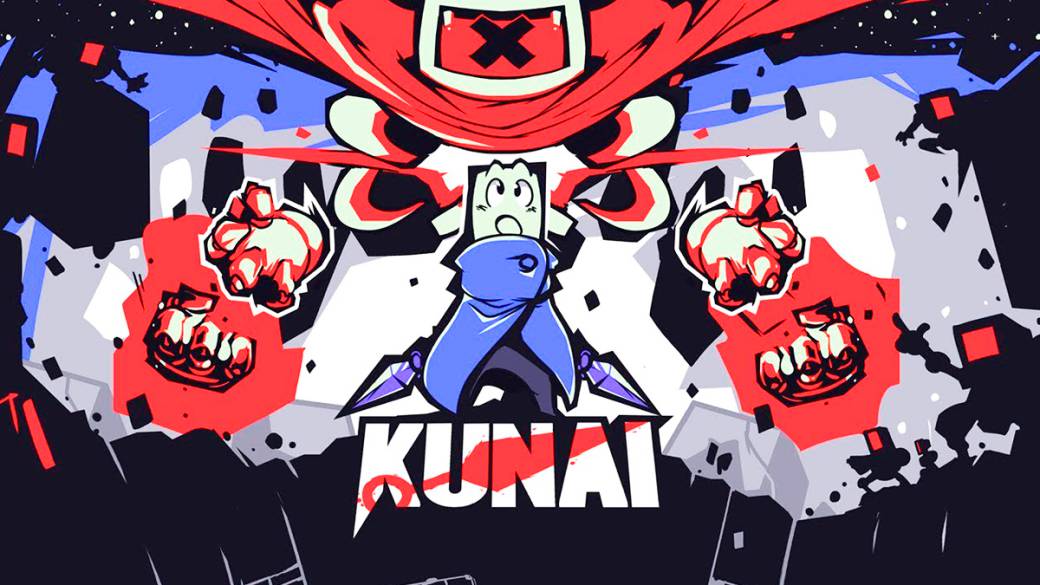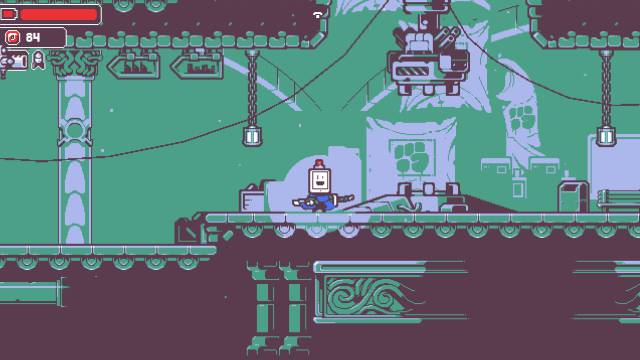
We analyze an adventure of a robotic tablet in the middle of a post-apocalyptic world.
It is rather tiresome, of course, to remember the enormous talent that is now scattered throughout the world, making video games of all fur. Nor is it less obvious that projects of a more or less retro type are a perfect cover letter for any team, but the truth is that this archetype begins to smell badly because of its handling. What a few years ago could surprise, it has more and more complicated to distance themselves from their peers, especially in the genres that receive new proposals more frequently. Precisely for all that it is very good news that there are ideas like The Arcade Crew (emerged from DotEmu) or Yacht Club Games, which seem to have perfectly understood the moment when certain genres in particular are found, but also the scene independent in general. Being companies with a tour behind, with bombs of the caliber of Shovel Knight, this conversion to publishers they are carrying out seems very interesting to us, since their influence may well raise the level of some projects that might otherwise remain lame. While we wait for the first incursion of Yacht Club as editor, the good people of The Arcade Crew have already shown their success with the sensational Blazing Chrome. With his new bet, Kunai, comes another tremendously personal project: the work of a typical small team made up of three people, to whom the experience of the French label has certainly come in handy.
Tablet + Ninja = Ninja Tablet
Kunai is set in a post-apocalyptic future of glue. In a surprising turn of events, an artificial intelligence has rebelled against humanity, so that no living being seems to have survived on earth, converted into the classic wasteland and uninhabitable wasteland. Interestingly, the effect of this total war has been to transform our world into a place that closely resembles a video game for Game Boy Color, but it is possible that this circumstance is not one that bothers much that will give a chance to this game. The visual aspect of Kunai is very well taken care of, with an amalgam of areas that come to remind quite a bit of what we could see in an old Nintendo laptop, but never end up taking seriously the visual limitations of that system. The final result, with a palette of colors quite limited but also with an enormously peculiar artistic aspect, is very pleasant to look at despite some aspects that we have found very debatable (such as the design of the protagonist himself).
Kunai allegorically shows the dangers of technological evolution while mocking the evolution of the screens. In all that devastated world there have only been a few red and blue robots that have tube monitors per head, so that “the chosen one” that will save the world this time will be… a shining flat screen tablet. Tabby, which is the name of the unclassifiable protagonist, is also a ninja of vocation, so the first minutes of the game are dedicated to travel on a path that is impossible to get out of, until you find the katana that will accompany us throughout the entire game. This first ride is nothing but a prelude to what we are going to have to do throughout the campaign, since in it we clearly see that we are facing a game that has much more action platforms than real MetroidVania.
Freedoms … the just ones

That talent we were talking about at the beginning of this Reviews has had one of its most recurring fields of action in the MetroidVania genre lately. It is easy to remember proposals that have expanded the spectrum of this type of games, each with its own particular focus. Following the canons of Alucard and Samus, Kunai offers a mapping to explore and ends up becoming – almost at the end – a classic MetroidVania in which to look for doors that we could not enter before, but the truth is that during most of the game There are two other elements that predominate much more than exploration: the speed of movement and the platform. There are several undisputed tributes to the great Hollow Knight, but at no time will we find that impressive extent of a mapping in which getting lost was almost a security. On this occasion we are going to be clear at all times where we have to go, taking into account that the adventure is guided so that nothing that happens in it becomes excessively cumbersome. The areas are wide, but the speed of movement of our protagonist – once he acquires the ability to get hooked on the walls – turns the game into a high-speed action platform, with phases of forced lateral displacement that honor the flying castles Super Mario Bros. 3, but they also get to flirt with precision platforms and high difficulty.
Too fast

The emphasis placed on the speed of Tabby's movements is evident. Jumping, clinging to a wall, pushing with the hook to grab another and then falling on an enemy with a blow down is very well carried out, and makes it easy for the game to have a very high pace without ever being overwhelming in difficulty , at least until incomprehensibly difficult final levels. With this exception, everything is very well carried out as an ideal proposal for a few hours of fun without complications, but the truth is that these weapons that it exhibits with elegance will also be its great weaknesses for experts in the genre. The speed at which the different zones are cleared, as well as the absence of a really remarkable peak of difficulty until the end, make this Kunai a game of much less range than it could have achieved by mechanics and visual appearance. Have fun, complete fluently, can be a good starting point in the genre and you have to admit that it is a well-polished and carefully designed game, but ends up leaving a little half once your campaign is completed, as there are something that ends up leaking into everything. It is somewhat disappointing, but even the most predisposed fan of video games with this aesthetic will have to admit that nothing that happens in Kunai becomes exceptional. It is entertaining and competent with truly remarkable moments, but there are too many sectors of excessive simplicity that end up annoying, whether or not works of more substance have been completed, such as The Messenger or the very Hollow Knight.
Kunai is, in short, a good game … to be taken with certain reservations. Although we would not say that it wastes its mechanics, it does cause some disappointment to check the small variety of enemies, which are also placed by the mapping in such a way that they end up offering the sensation that only small robots with CRT screen heads come out. The attack patterns of the other enemies are very interesting, but they have only been combined with something more daring in that last barrage where things go from mother. They gave for much more floating samurai that fire rockets or robots that become invisible, but perfectly summarize that feeling of having taken few risks that the entire game conveys, even if their virtues are undeniable.
CONCLUSION
Kunai is a metroidvania that sacrifices the typical freedom of exploration of the genre for the sake of high game speed. Although it is an ideal proposal for those who do not want to complicate their lives with intricate mappings or a high difficulty at all times, it could have been a video game with much more packaging in almost all its facets. In any case, it is a proposal with possibilities to grow that presents in society a team that can be expected in the future.
THE BEST
- An ideal Metroidvania for novices in the genre
- It is solvent at the mechanical level
- The phases of automatic lateral displacement
- Visually attractive
WORST
- Different zones are scanned too quickly
- The peak difficulty of the end is disproportionate to what we have played before
- … despite some designs, such as Tabby's own
Good
It meets the expectations of what a good game is, it has quality and does not present serious failures, although it lacks elements that could have taken it to higher levels.
